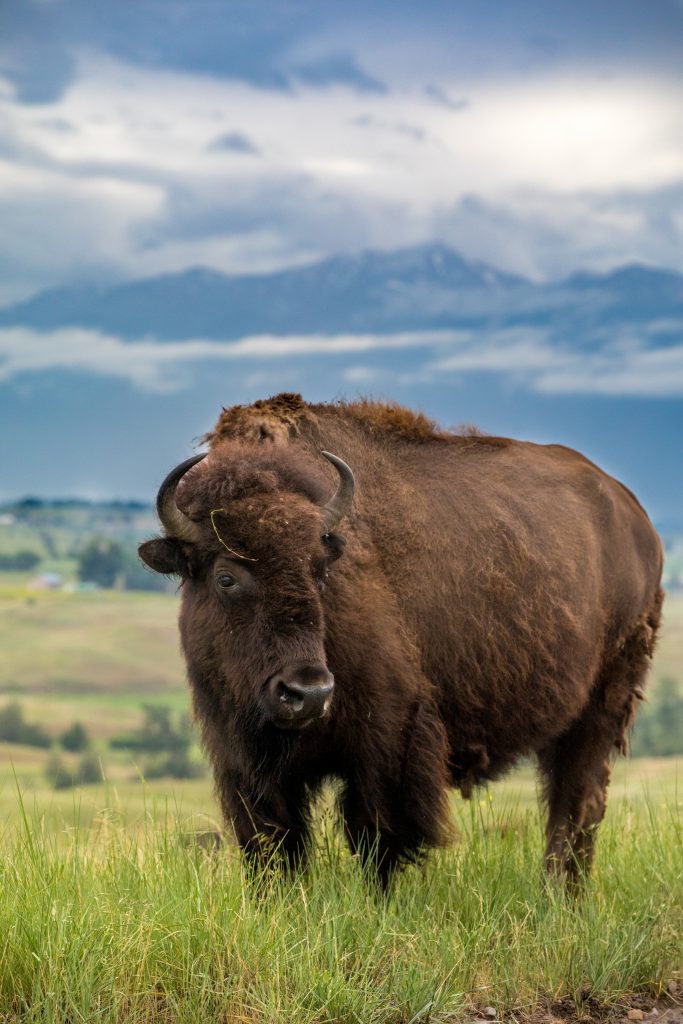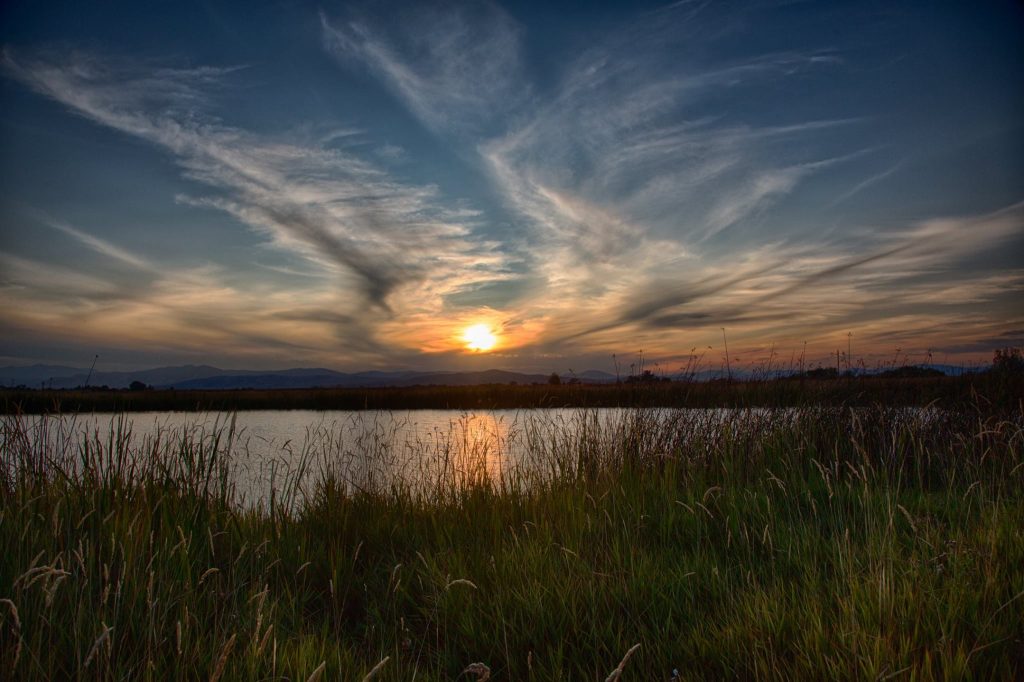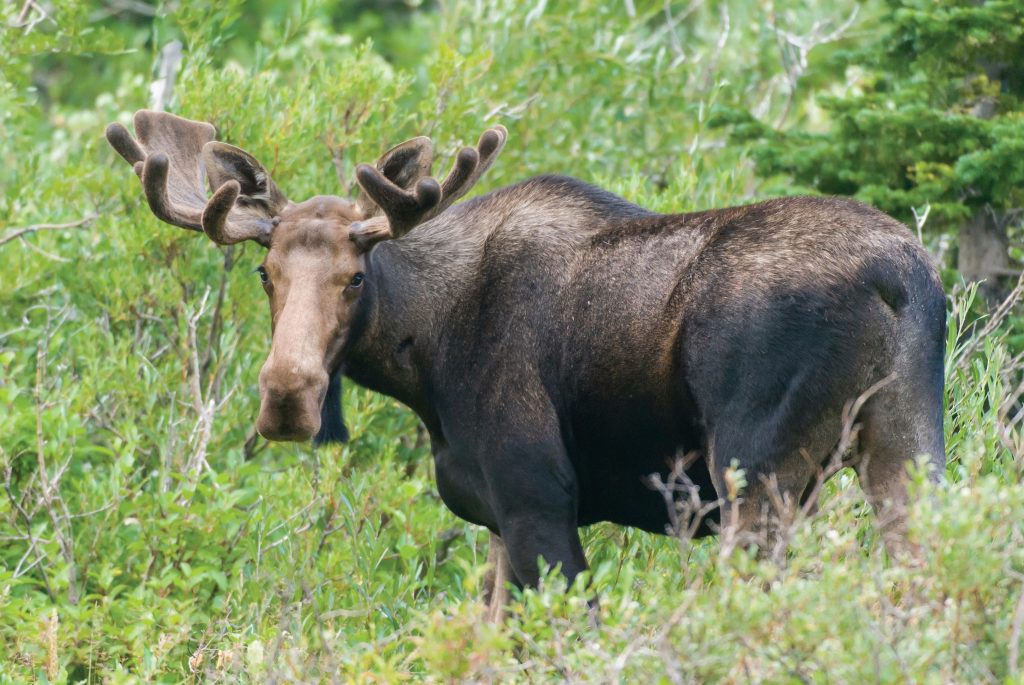One of the things that makes Montana so special is that we share the land with an abundance of beautiful, wild creatures. Western Montana is comprised of millions of acres of public land that is home to 83 species of mammals and 393 species of birds—and seeing some of them is easier than you think. There are plenty of undesignated places to watch wildlife in Glacier Country, but some amazing spots have been set aside specifically for Montana’s mammals, birds and reptiles. Explore our year-round wildlife refuges and viewing areas that offer a diversity of habitats and a look at some of the region’s most majestic inhabitants.

CSKT BISON RANGE
The CSKT Bison Range in Moiese is not only an excellent place to view bison (250 – 300 head of bison call this area home), but deer, elk, bighorn sheep, pronghorn antelope, mountain lions and the occasional black bear also roam the area, along with 200+ species of birds. The range comprises a diverse ecosystem of grasslands, fir and pine forests, riparian areas and ponds. Open from dawn to dusk daily, this spacial place includes two wildlife drives: Prairie Drive, which is a short year-round drive, and Red Sleep Mountain Drive, which travels through the heart of the range and is open mid-May to mid-October. Make sure to bring your camera and binoculars or spotting scope and plan your visit with seasonal visitor center hours in mind.
LEE METCALF NATIONAL WILDLIFE REFUGE
In the beautiful Bitterroot Valley, the Lee Metcalf National Wildlife Refuge—2 miles north of Stevensville—is one of the most popular refuges in Western Montana. Open from dawn to dusk daily, visitors can walk numerous short trails. There are also options to drive or bike Wildfowl Lane, a county road that runs through the refuge and provides a closer look at ponds packed with migrating waterfowl in the spring and fall. More than 240 species of birds have been observed in the area, and mammals on the refuge include white-tailed deer, yellow-bellied marmots, porcupines, beavers and gophers, among others. Plan your visit with time to stop by the year-round visitor center.

NINEPIPE NATIONAL WILDLIFE REFUGE
Stunning Mission Valley views accompany the scenic Ninepipe National Wildlife Refuge, a pristine wetland complex in Charlo. Photographers flock here to capture the evening grandeur of the reservoir’s Mission Mountain backdrop. In addition to 200+ species of birds, you’ll find nationally acclaimed winter raptor viewing and mammals like white-tailed deer, the occasional grizzly bear and wetland creatures like muskrats, skunks, mice and voles. Explore the interpretative site for interesting information about the refuge. Established to accommodate nesting birds, access to the refuge changes with the seasons, and there are no amenities or facilities of any kind at the refuge itself, so plan your visit accordingly. Driving on Ninepipe Road is available year-round. Walking is limited on the refuge as water comprises more than 80% of the area and much of the land is very wet during the spring.

WILD HORSE ISLAND
Wild Horse Island/Flathead Lake State Park is a unique Montana treasure. Accessible only by boat and 3 miles long, Wild Horse Island is the biggest island on Flathead Lake—the largest lake West of the Mississippi—and offers adventures like hiking, swimming, sailing and boating. The island features old-growth ponderosa pine forestland and prairie grasslands with scenic trails and ample wildlife viewing. If you’re lucky or determined, you’ll catch a glimpse of the wild horses for which the island is named. Other island inhabitants include bighorn sheep, deer, songbirds, waterfowl, bald eagles, falcons and bears. Note: Store food in bear-safe containers on your boat. Also, anglers at this Flathead Indian Reservation site are required to have a joint state/tribal fishing license.
PABLO NATIONAL WILDLIFE REFUGE
Two miles south of Polson and also within Flathead Indian Reservation boundaries, the Pablo National Wildlife Refuge provides a unique glimpse at pothole wetlands and offers hiking, biking, fishing, cross-country skiing and snowshoeing. This serene setting is the site of the trumpeter swan release during the 1996 reintroduction to the Mission Valley and continues to be an important site. Vehicles can access the refuge along roads across the dam and along the north side of the refuge. The wetland habitat supports abundant waterfowl species and common wetland-friendly mammals, like muskrats, striped skunks, mink, field mice and meadow voles. There are no amenities or facilities of any kind here, and portions of the refuge are closed in the spring to minimize human disturbance to nesting birds, so plan your visit accordingly.
SWAN RIVER NATIONAL WILDLIFE REFUGE
The Swan River National Wildlife Refuge is situated between the Swan and Mission Mountain ranges south of Swan Lake, offering a scenic wildlife viewing adventure. The refuge provides wetland and grassland habitat for 171 bird species, white-tailed deer, mule deer, elk and moose, plus beavers, muskrats and raccoons. Visitors can enjoy hiking and snowshoeing this picturesque refuge from east to west via Bog Road. You’ll find a viewing platform and information kiosk with interpretive panels, but there are no significant facilities on the refuge, so plan your visit with that in mind.

LOST TRAIL NATIONAL WILDLIFE REFUGE
Lost Trail National Wildlife Refuge lies in the tranquil Pleasant Valley mountain drainage area northwest of Marion. Prairie grasslands, riparian and wetland areas, and aspen groves serve as important habitats for a variety of wildlife, including elk, deer and moose. Although elusive, wolverines, Canada lynx, fishers and grizzly bears have all been documented here as well. This remote refuge offers a secluded experience. Please note that GPS navigation to the refuge is not always perfect, and cell service can be spotty, so plan your visit accordingly.
BE WILDLIFE WISE
While observing wildlife, it’s essential to be responsible and protect the natural habitats of these creatures. Follow these guidelines:
- View wildlife from the safety of your car or from a safe distance. Stay at least 100 yards away from bears and at least 25 yards away from all other wildlife, such as mountain goats and bison.
- Never approach, touch or feed wildlife, even when an animal does not seem to be threatened by your presence.
- Let wildlife know you’re nearby. When hiking, be sure to bring a friend, carry bear spray, stay on designated trails and make noise at regular intervals.
Read more on wildlife safety, including recreating in bear country here. Montana’s wildlife is a precious treasure, and experiencing it is a unique and unforgettable adventure. As you explore our magnificent landscapes, please do so responsibly to help protect and preserve our natural heritage.
Please note: We ask that all our visitors and residents Recreate Responsibly by being mindful of the following: know before you go; plan ahead; play it safe; leave no trace; tread lightly; and help build an inclusive outdoors.
August 19, 2024
Related: Bison Range, Bitterroot Valley, Charlo, Dayton, Fall Fun, Family Fun, Flathead Corridor, Flathead Indian Reservation, Marion, Moiese, Outdoor Fun, Pablo, Parks, Seeley-Swan Corridor, Spring Fun, Stevensville, Summer Fun, Wildlife, Winter Fun


Comments